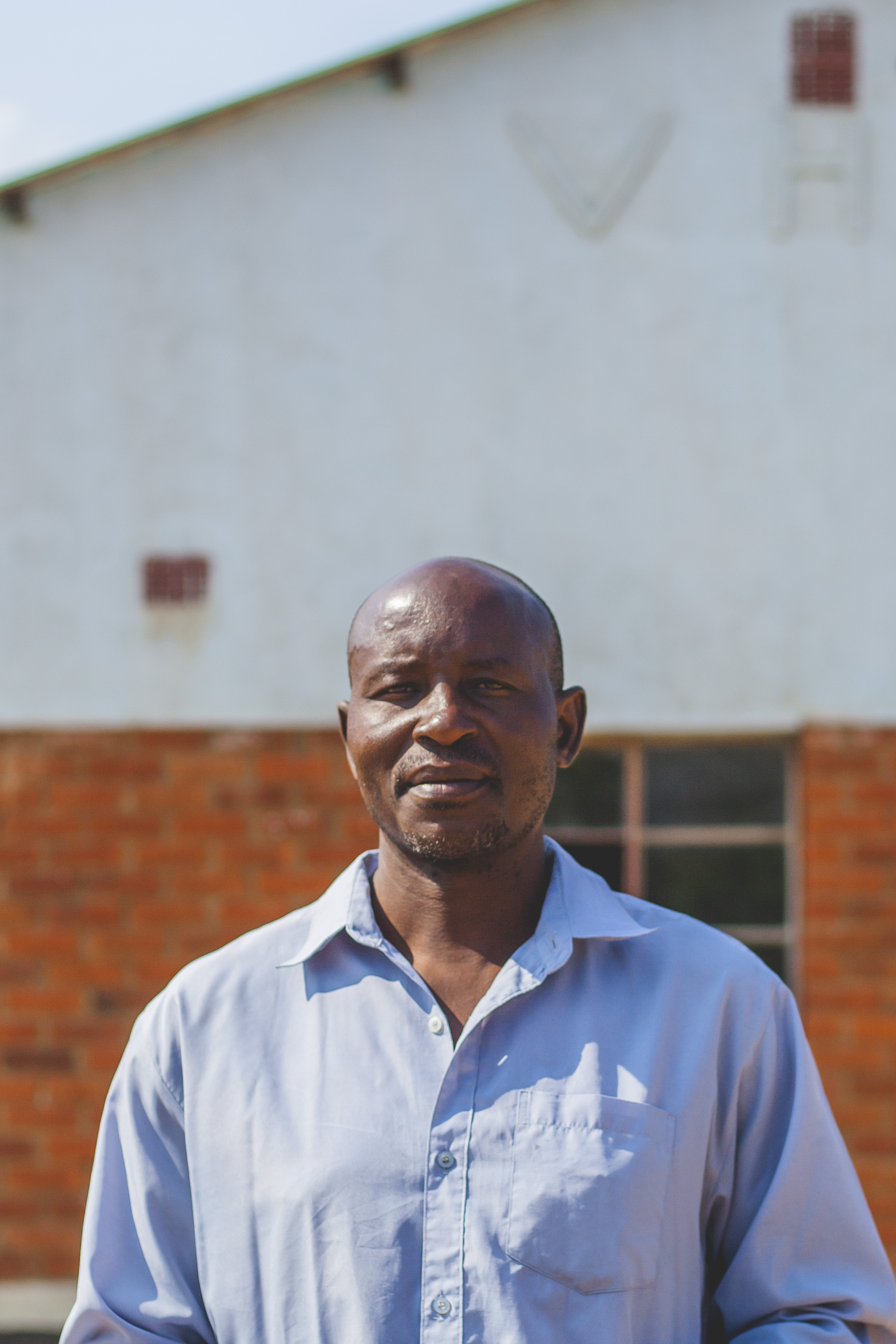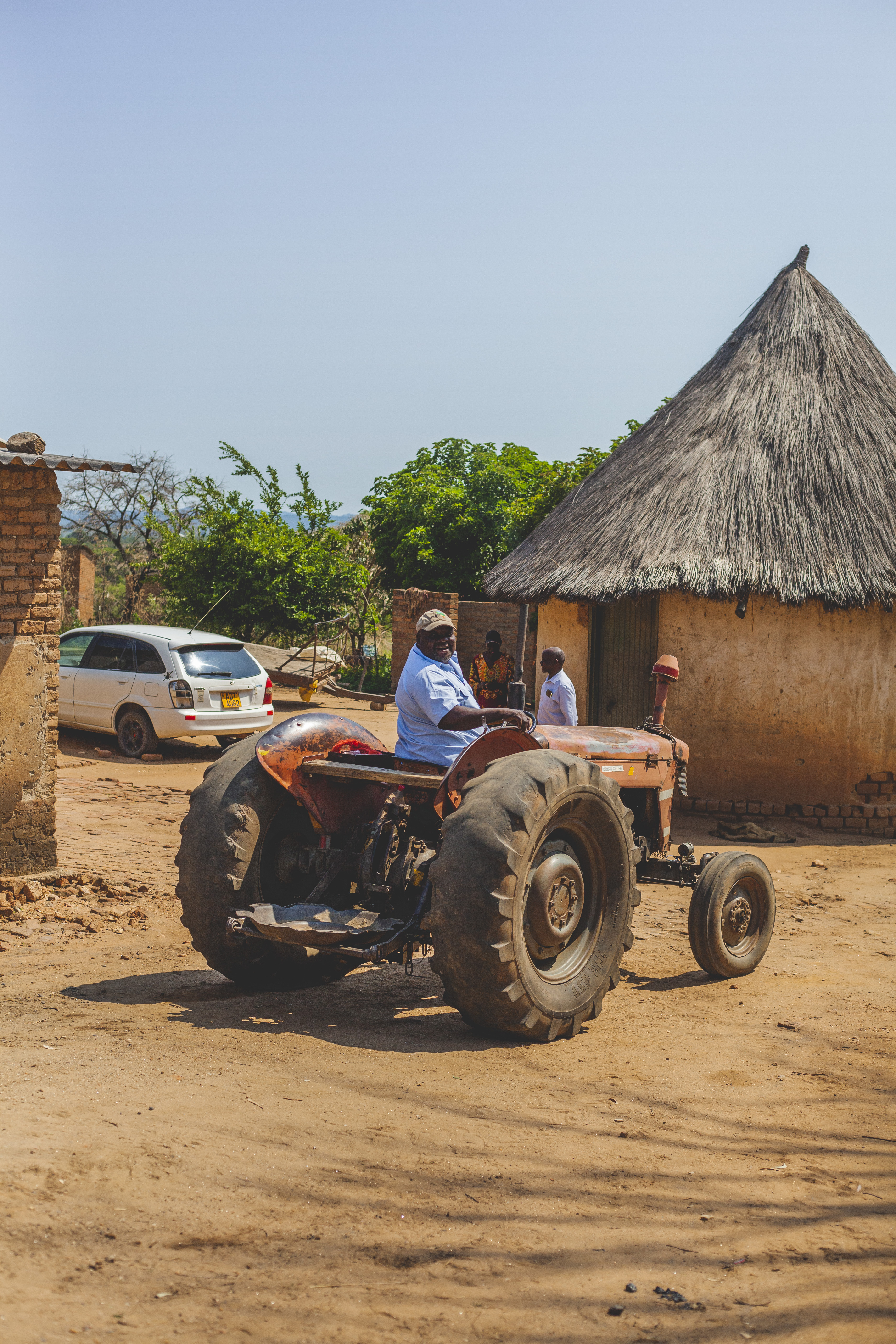Preventing veldfires in the Zambezi Valley
April 25, 2023

Senior teacher Mr Samson Munodawafa at Vuti High School shows the veld fire prevention equipment procured through the project.
Vuti High School in Karoi which was under threat from veld fire is now enjoying a double benefit from advanced hay baling technology as they reduce fire incidents and expose agriculture learners to agriculture engineering. The machinery bought by the Environment Management Agency (EMA) through the Zambezi Valley Biodiversity Project, implemented by the Ministry of Environment, Climate, Tourism and Hospitality Industry and UNDP, is also benefiting tobacco farmers in the area who in previous years lost their crops to fire.
The equipment procured includes two tractors with balers, disc mowers and wheel rakes. Senior teacher Mr Samson Munodawafa said that the Education 5.0 programme emphasizes a hands-on approach to learning, and the equipment allows them to apply the knowledge in their day-to-day activities at home. He sais “Our learners have a better understanding of concepts when they see the machinery and see how it operates. This generates an interest in them to pursue agriculture careers.”

Senior teacher Mr Samson Munodawafa at Vuti High School.
Mashonaland West province has for the past five years topped the country's veld fires statistics and the school as well as surrounding farmers are working with EMA in coming up with an initiative to reduce fire incidents. Mr Munodafawa said they are at the boundary with Marongora game park and people deliberately start fires while hunting.
-

Vuti High School in Karoi which was under threat from veld fire is now enjoying a double benefit from advanced hay bailing equipment
-

Senior teacher Mr Samson Munodawafa at Vuti High School shows the veld fire prevention equipment.
-

Hay bailing equipment can help prevent veld fires
-

Creating fire guards by cutting down tall grass has proven an efficient way to reduce veld fires.
-

Equipment procured through the Zambezi Valley Biodiversity Project is benefiting both the school and the surrounding farmers.
-

Using or selling the hay can be an added benefit.
-

Equipment bought through the GEF6 project help prevent veld fires.
“Three years ago, our school’s Headmaster was burnt while trying to save a water engine during a fire incident at the school. He is lucky to be alive after the fire surrounding him as it engulfed part of the school,” he said. The head, Mr Brian Chigugu was burnt on the hands, face and recovered after spending three months in hospital.
“We used to construct fire guards manually, but this area has tall grass making it easy for wind to carry fire over. We were living in fear of fire outbreaks but with the coming of the new machinery we are now making standard fire guards.” said Mr Munodafawa. He continued, “We are enjoying a double benefit from the machinery because we are utilising the hay bales in our agriculture department. We are using the grass for mulching and bedding for our poultry project. This is helping our agriculture learners to have a hands-on approach to new machinery and knowledge.”

Mr Tavaziva Mudarika and Mr Thomas Mudzikitiri are both farmers in Vuti benefiting from the equipment.
A tobacco farmer Mr Tavaziva Mudarika at farm 17 in Vuti said during the 2021/2022 fire season he did not experience any fire incidents at his farm, partially giving credit to the fire guards that were constructed with support from the Zambezi Valley Biodiversity Project. His farm is close to the game park and farmers sometimes start fires to scare away wild animals like elephants and lions.
“EMA brough the machinery to the farm and after cutting down they gave me a 20 percent quota of the hay bales. Unfortunately, we don’t have resources to venture into pen fattening,” he said. “We want a market to sell the grass to areas in Matabeleland who can make good use of the grass while we get an income.” Mr Mudarika also appealed to EMA to increase the hay baling equipment even further so that all the farmers in ward 1, 4, 7 and 8 could benefit.

"It is now upon us as farmers to own this project and sustain it", sais Mr Thomas Mudzikitiri.
Another farmer, Mr Thomas Mudzikitiri concurred with Mr Mudarika and said he is not able to use the grass for mulching because they are commercial tobacco and maize farmers. Hi however confirms that the equipment has helped with the threat of veld fires. “June and July are the peak of the fire season here and we want to have the grass cut on time. We are engaging EMA so that our youths can be trained on how to operate the equipment,” he said. “EMA introduced the initiative and we have seen its benefit. It is now upon us as farmers to own this project and sustain it. We used to create fire guards using our tractors, but this machinery is doing a better job to raze all the grass down.”
Story by Fungai Lupande
The Zambezi Valley Biodiversity Project is a 6-year project working on conservation of biodiversity in the mid-to-lower Zambezi Valley of Zimbabwe. This Government of Zimbabwe and UNDP project is implemented through the Ministry of Environment, Climate, Tourism and Hospitality Industry (METHI). It is funded by Global Environment Facility (GEF).
The project has made great strides in safeguarding nature, preventing illegal wildlife trade, reducing human wildlife conflict and assisting communities with alternative sustainable livelihoods options. Part of this work includes efforts to prevent veld fires and habitat loss.

 Locations
Locations

